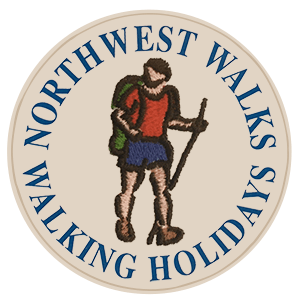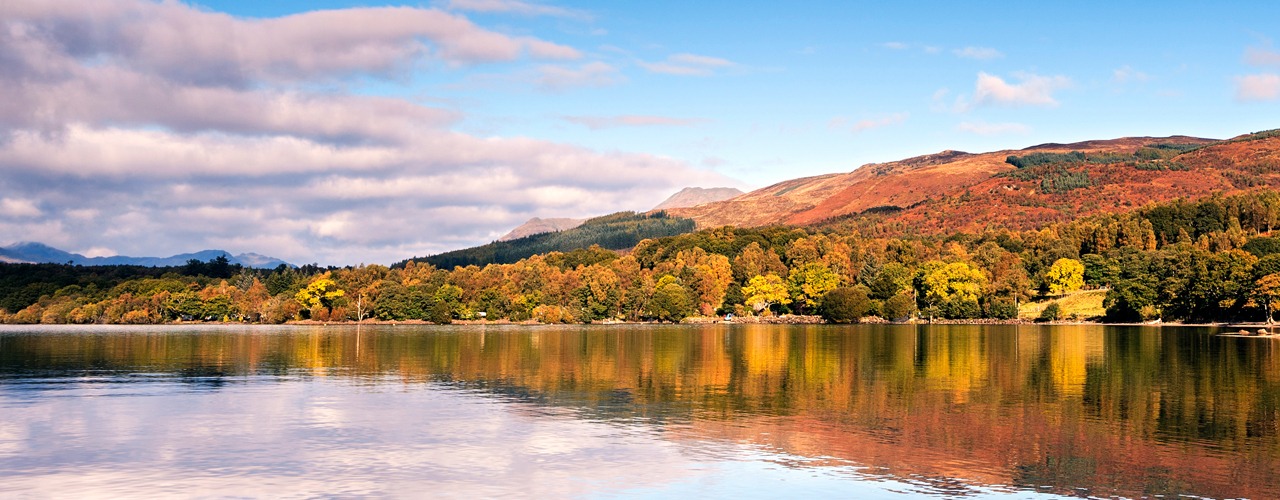Route Description
The 96 mile West Highland Way links Milngavie, just outside Glasgow, to Fort William in the Scottish Highlands. It passes through some of the most spectacular scenery in all of Britain, from lowland Scotland into the heart of the Highlands.The following is intended to provide further information about the route. Please note that all distances and heights in this document are approximate and along with all the other information are provided as an aid to describe the route. Several guide books providing more detailed route descriptions and information are available.
Terrain
The terrain varies from lowland moors, woodland, rolling hills, to high mountainous regions in the Scottish Highlands.
Waymarking and Navigation
The route is sensibly waymarked and generally easy to follow with the aid of a map and guidebook.
Milngavie (height above sea level 50m).
Set amidst beautiful countryside this busy town is just 7 miles northwest of Glasgow and is the official start point of the West highland Way.
Milngavie (50m) to Drymen (50m). Distance 12 miles
The official start of the West Highland Way is a granite obelisk in Douglas Street, Milngavie. The Way leaves the town centre and enters Mugdock Country Park. On leaving the park the route continues northwards on good paths through rolling farmland. On route to Drymen the Way passes through Dumgoyne village.
Drymen (50m) to Balmaha (20m). Distance 8 miles
The Way enters Garadhban Forest and follows a forest track for a few miles. Upon leaving the forest you can either follow the alternative route to Milton of Buchan and then the road to Balmaha, or follow the path as is climbs almost to the summit of Conic Hill (360m), on a clear day there are wonderful views over Loch Lomond. The Way then descends to Balmaha, and passes the National Park Centre.
Balmaha (20m) to Rowardennan (20m). Distance 7 miles
A woodland walk along good paths or tracks for most of the route but it can be twisty and undulating in places. The Way runs close to the eastern shore of Loch Lomond.
Rowardennan (20m) to Inverarnan (30m). Distance 14 miles
The Way follows a forestry track for approx 2 miles to Ptarmigan Lodge, 300m further on the Way divides. The right hand, higher path follows a forest track and is easier going. The lower route goes down steep stone steps toward the shoreline. It is hard going in places; sometimes steep above the loch and sometimes scrambling among boulders. The two paths run for 4 miles then converge and continue through pleasant woodland, for a further 3 miles to Inversnaid. The Way then continues along the side of the loch but the going is more difficult and the path for the next few miles is regarded as one of the toughest sections of the Way. Two miles before Inverarnan the going is much easier. The historic, and somewhat eccentric, Drovers’ Inn at Inverarnan is a great favourite with its range of good value meals and selection of beers and whiskies. It is well worth a visit, if only to see the collection of stuffed animals and birds.
Inverarnan (30m) to Crianlarich (180m). Distance 6 miles
The Way continues along good paths and tracks, much of which is an old military road. This is the gateway to the Highlands and the Way gains height as it leaves the Loch Lomond basin and rises to 250m.
Crianlarich (180m) to Tyndrum (225m). Distance 6 miles
Initially through a forest the way continues along good paths and tracks with some moderate descents and ascents.
Tyndrum (225m) to Bridge of Orchy (160m)/Inveroran (180m). Distance 7 or 10 miles
The Way continues for 7 miles along good paths and tracks following the line of an old military road to the Bridge of Orchy. Depending on availability accommodation is either booked at Bridge of Orchy or Inveroran, which is another 3 miles along the Way.
Bridge of Orchy (160m)/Inveroran (180m) to Kingshouse (250m). Distance 12 or 9 miles
There is good going underfoot as you cross Rannoch Moor, one of Britains largest and wildest moors. The path climbs steadily to its high point at 450m before descending to Kingshouse. The scenery is spectacular but you are highly exposed and in bad weather this can be a very tough stage of the Way.
Kingshouse (250m) to Kinlochleven (20m). Distance 9 miles
The Way follows the route of an old military road. 3 miles beyond Kings House the Way climbs steeply up the Devils Staircase. At 550m this is the highest point on the Way. There is now a long descent into Kinlochleven. This again is a hard and exposed stage in bad weather.
Kinlochleven (20m) to Fort William (10m) Distance 15 miles
In the first mile the Way zigzags steeply up the hillside to meet an old military road (250m). The highest point on todays route is Lairigmor, the high pass (330m), though there are no more serious gradients as the route continues on good paths with high mountains on both sides. The final stretch is a bit of rough walking through Nevis Forest, with Ben Nevis (1344m) the highest mountain in the British Isles, visible through breaks in the trees. The Way descends into Glen Nevis and follows a road for the final 1.5miles to Fort William and the end of a wonderful route.
Fort William
Fort William is the largest town in the west Highlands of Scotland. It is surrounded by magnificent scenery and has an important history. There are high mountains, lochs, beautiful glens, forests and beaches in between. This is a huge outdoor playground which caters for a wide range of activities. Fort William is an excellent location to spend an extra day or more. There is a wealth of on land, and on water activities. Many people stay a day longer just to climb Ben Nevis. Please contact us if you require further information.
More Information?
For more information or to make an enquiry, please don't hesitate to call or email us.


